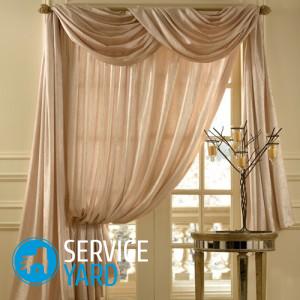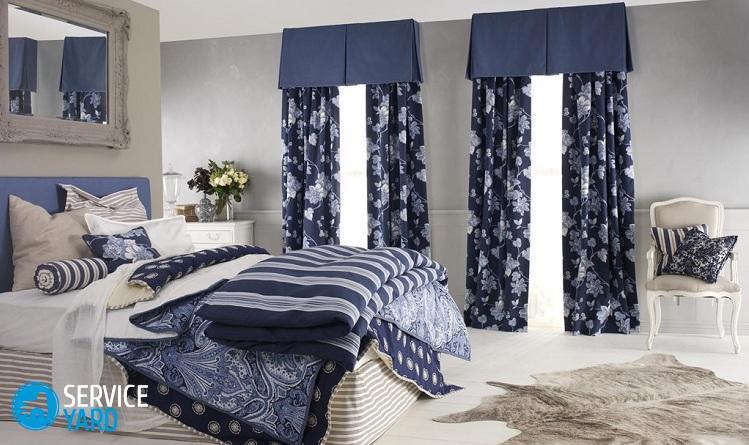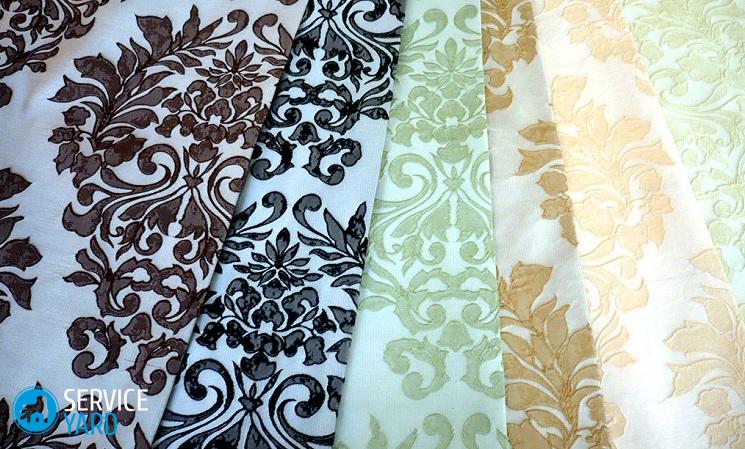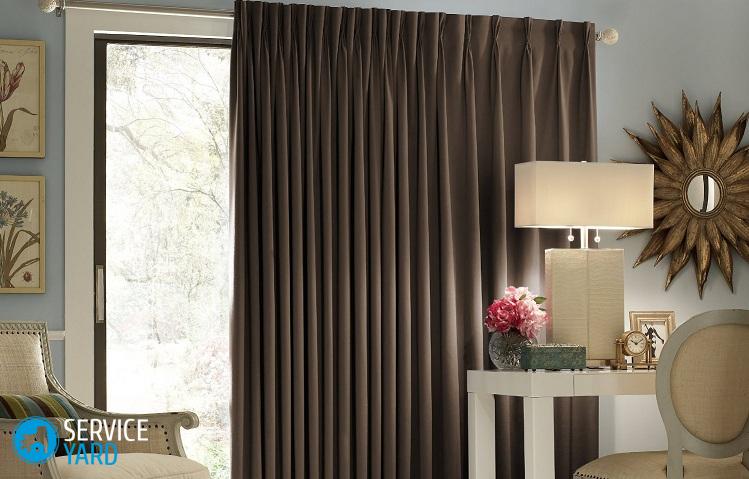How to choose fabric for curtains?

In recent years, the trend of tailoring curtains to order according to their own design and from selected materials has become more and more popular. Naturally, this is much more convenient than choosing an option that matches the existing interior, because you have to review a huge number of ready-made curtains, study the market. Often people have such ideas that it is simply impossible to find among the proposed range. Therefore, it remains only to order tailoring of curtains when tastes and preferences of the client will be taken into account. Possessing even the smallest skills of cutting and sewing, you can even do it yourself. But the question arises, how to choose fabric for curtains, so that with its help it would be possible to realize a specific idea and fantasy. Actually, we will deal with this problem in this article.
to contents ↑How to choose a suitable color, pattern, texture of the fabric?
A rather important point when choosing a material is its pattern, texture and color.
Important! So, when determining the shade of the fabric from which the curtains will be sewn, it is necessary to take into account the color of the walls, ideally if they are darker or lighter. Thanks to this approach, they will stand out against the background of the general interior, without merging into one color spot with the walls.
What we have here:
- Blue, blue, gray tones can cool the room.
- Thanks to warm shades, in particular orange, red or yellow, the room will become comfortable, cozy.
Basically, the color combination is built on two main principles - contrasting or harmonious:
- In the first case, the fabric can contrast in color with the main shades, complementing the palette with bright colors.
- In the second case, the main color of the material is selected, and all others are selected in such a way as to create harmony with it in the drawing, color.
Follow these recommendations when choosing which fabric to sew the curtains in color and pattern:
- If the room is too pale, then the curtains should be bright, and if the room is, on the contrary, bright, then it is better to make curtains plain.
- To achieve a visual increase in a small room, it is better to sew curtains from light-colored fabric.
- Curtains with vertical stripes can optically enlarge a room with a low ceiling.
- In a tall and narrow room, curtains with horizontal stripes will simply look perfect.
- Material with a thick pattern is not recommended to drape, otherwise - the pattern simply disappears.
- Using tulle without curtains, it is better to drape it thickly.
Important! A unique effect can be achieved by combining several materials with different textures. Due to the play of light and shadow in the weave of the fabric, the color of the textured material will become more complex, rich, deep.
Consider the following nuances:
- Textured fabrics have incredible matte, velvety, soft colors. They are best combined with interior items made of metal, leather, polished wood.
- Materials with embossed textures are ideally combined with painted furniture.
How to choose a material by composition and type?
When deciding which fabric is best for curtains, attention should be paid to its composition, type, since there are a lot of varieties of them. To date, these types of materials are distinguished:
Natural fabrics
Nowadays, a special interest among consumers is manifested in original styles in the design of interiors. In such cases, preference is given to natural materials - linen, satin, chintz, staple.
Important! But they all have one big drawback: they are difficult to care for. Therefore, they should be washed with special care so that they do not sit down, do not shed. They also need a mandatory ironing.
For this reason, choosing natural fabrics for sewing curtains, you need to give preference to options with special additives that increase their appearance, strength.
Artificial materials
These include organza, polyester, crepe, brocade, jacquard. All of them differ in high indicators of practicality, therefore they are ideal for the manufacture of curtains.
Such fabrics do not fade under the influence of sunlight, do not wrinkle, do not sit down, lend themselves perfectly to drapery, do not fade during washing, and it is very easy to care for them.
Mixed fabrics
They are made from synthetic and natural materials. So, they can combine both silk and nylon, cotton and acrylic, polyester and linen. These fabrics have all the advantages of the first and second type, so they are chosen most often.
to contents ↑Practical curtains:
- The most practical are curtains made of 100% polyester or with the addition of cotton. Such products can be easily washed in a washing machine in warm water, in contrast to curtains made of linen, cotton, and velvet.
- Viscose curtains are also very durable and practical, and they are also fireproof, which is especially important for the kitchen.
- Window openings in the hall or office should be decorated with curtains made of taffeta, because it is smooth, silky and durable, has a game and shine. Thanks to her, the interior becomes more presentable and luxurious.
- Silk and cotton fabrics quickly fade and lose their appeal. To the touch they are incredibly pleasant and outwardly beautiful, therefore they are still popular among consumers.
We choose fabric for sewing curtains for each room in the house
When determining the material for sewing, special attention should be paid to the density of fabric for curtains. Which is better, you need to choose based on the functional purpose of the room in which they will be located. Much of this depends on their compatibility with the interior and attractiveness.
Curtains for the kitchen
There should be special curtains in this room, because it is here that the housewives cook food daily and spend most of their free time. For these reasons, the humidity and temperature conditions in the kitchen are very different from other rooms in the house.
You also need to clean it every day, therefore, choosing which fabric to sew the curtains from, in this case it is better to prefer non-marking and thin material. The main thing is that the curtains do not absorb odors and repel dust well.
Draperies for a bedroom
It is very difficult to choose how to close the window in this room, since it is the bedroom that is an intimate place where a person should always feel cozy and comfortable. Outsiders rarely appear here, therefore, when determining the fabric, it is better to be guided exclusively by your preferences and tastes.
The main thing is that the curtains are dense and do not let in the sun's rays.
Important! It is better to choose a neutral color so that it does not irritate the nervous system, for example, beige, peach or golden.
Curtains for the living room
It is recommended to decorate the living room in accordance with the tastes of the guests, as they, as a rule, consider the interior with special attention. Since the behavior and mood of the guests is greatly influenced by the color of the curtains, it is better to abandon too variegated and catchy options.
They should emphasize your taste and social status, and arouse the desire to conduct calm and intimate conversations. To emphasize the view opening from the window, it is better to sew curtains from plain materials.The best fabric for curtains in the living room should also be selected taking into account the decorative design of the room.
to contents ↑Stock footage
Regardless of the variety of types of materials available and their colors, it is always necessary, first of all, to be guided by your own taste preferences. A win-win option is to seek the help of an experienced designer.
- How to choose a vacuum cleaner taking into account the characteristics of the house and coatings?
- What to look for when choosing a water delivery
- How to quickly create comfort at home - tips for housewives
- How to choose the perfect TV - useful tips
- What to look for when choosing blinds
- What should be running shoes?
- What useful things can you buy in a hardware store
- Iphone 11 pro max review
- Than iPhone is better than Android smartphones






